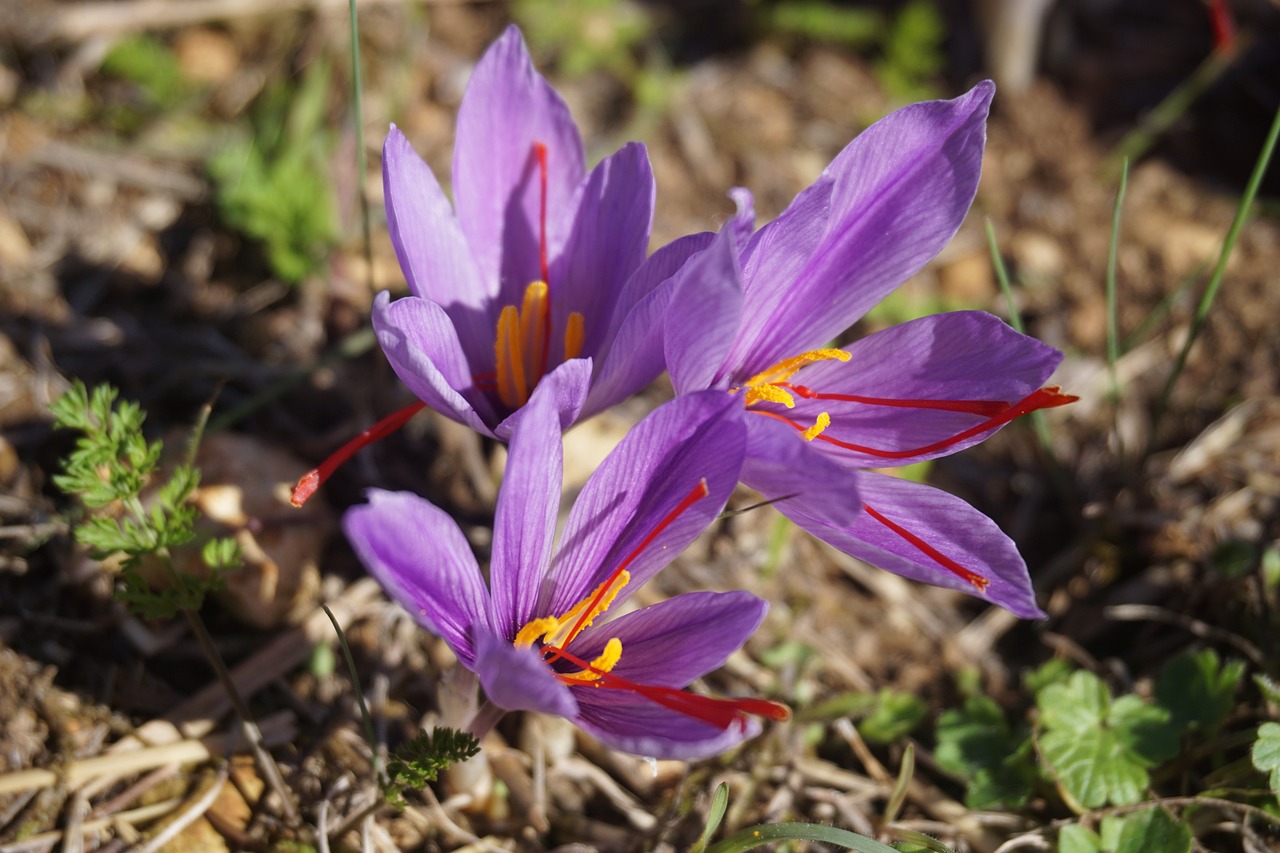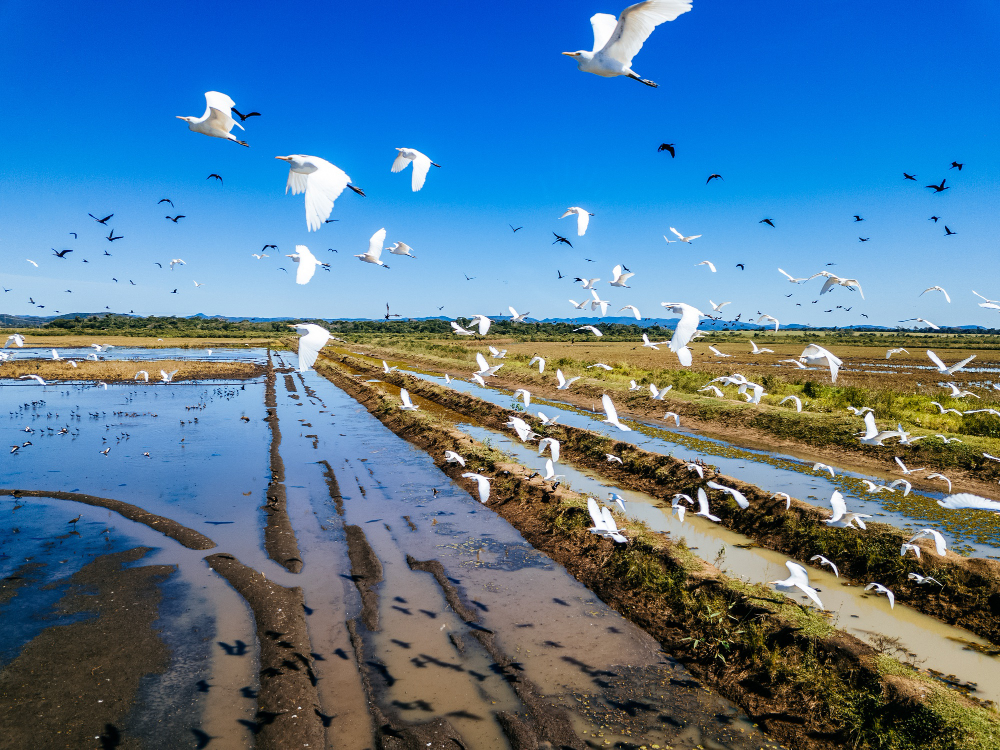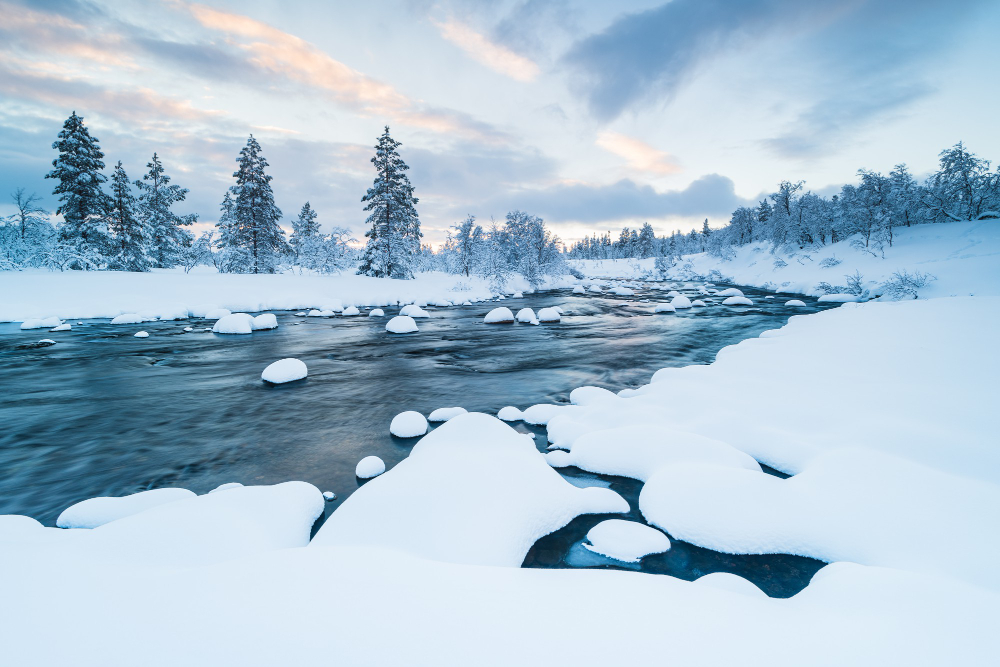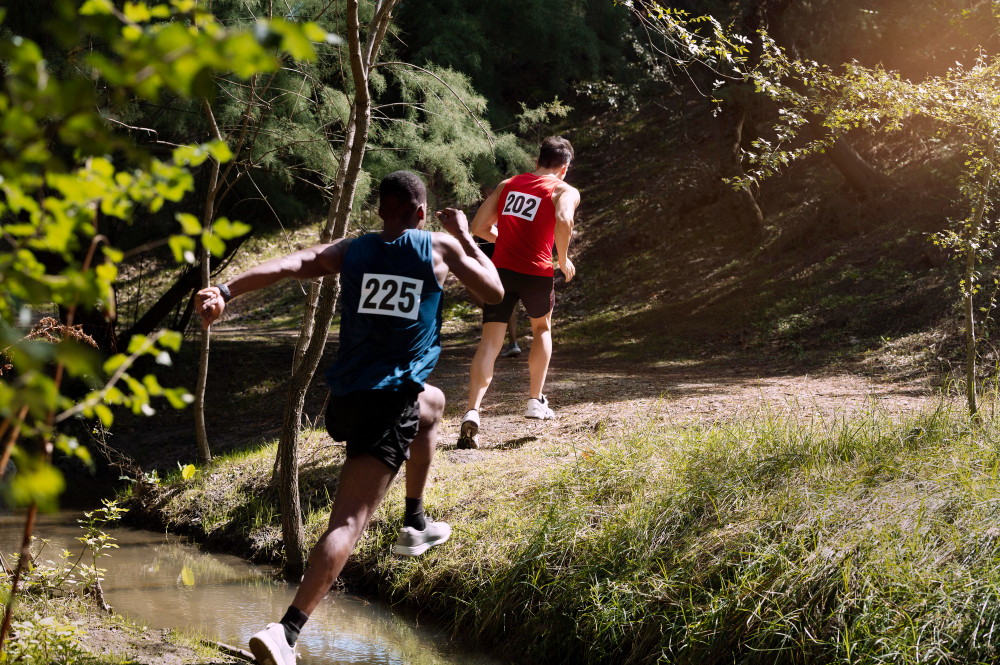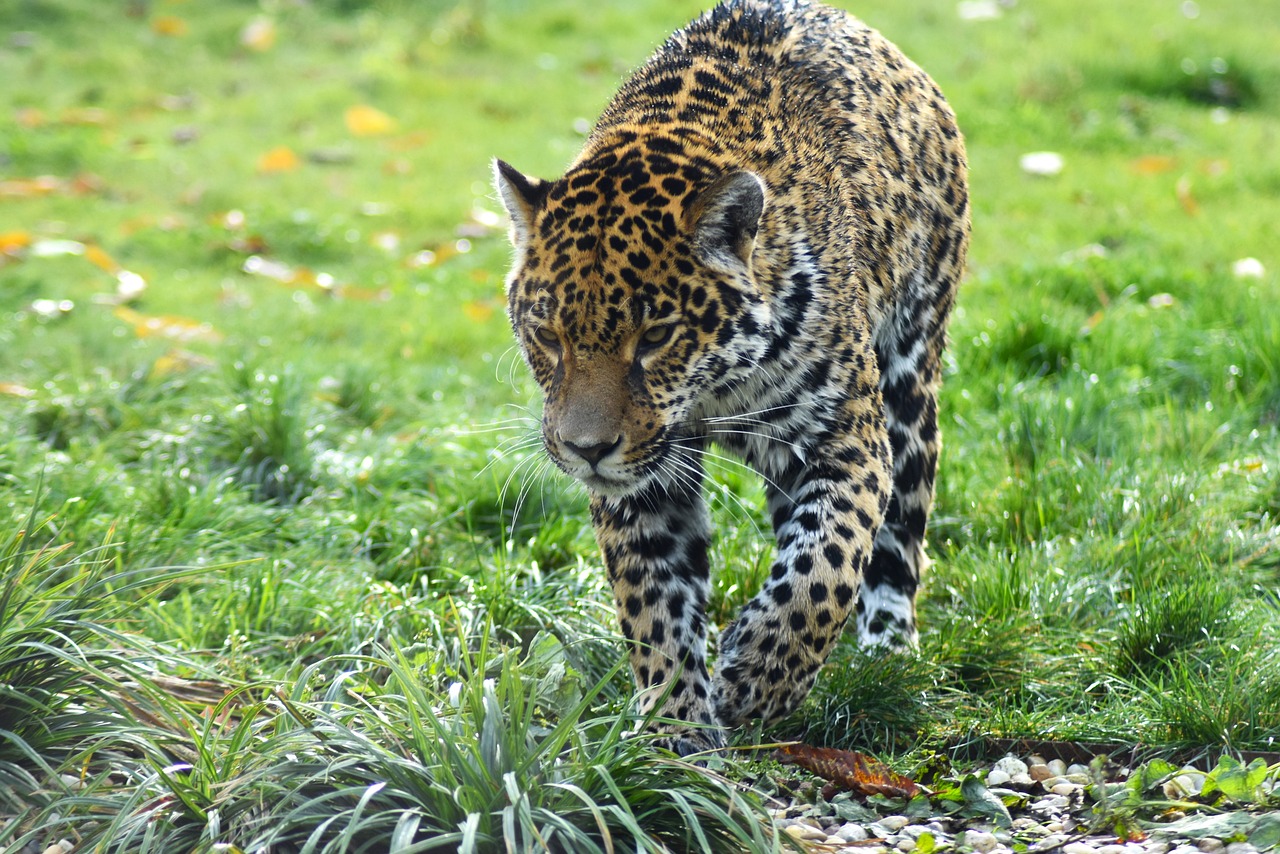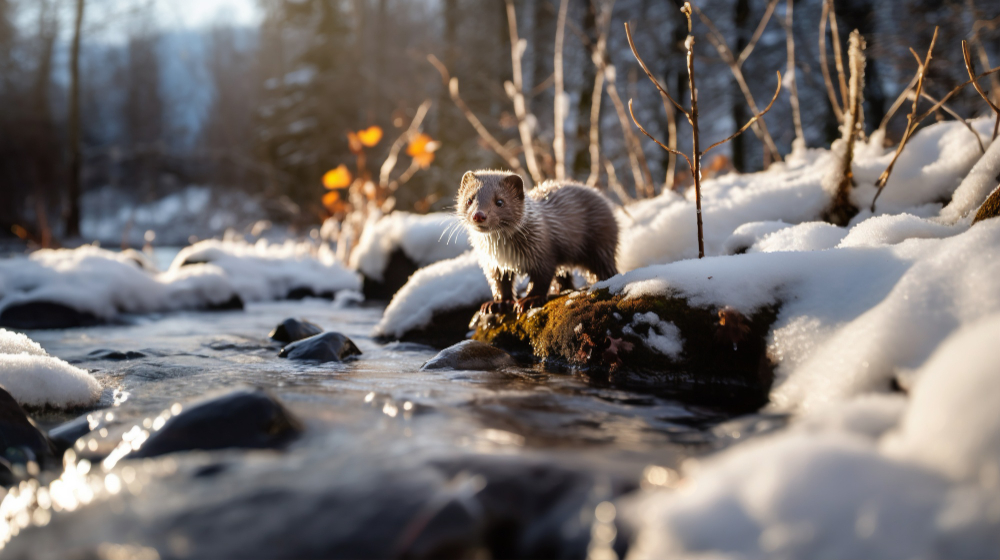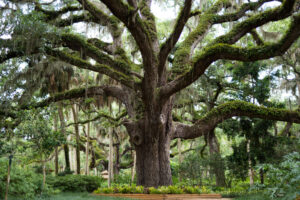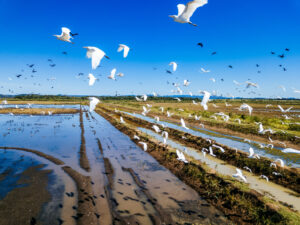Beautiful, majestic, rich with power from mighty rivers and valuable minerals, the higher reaches of the Rockies offer a refuge to some of the rarest animals of the region.

Like a giant back bone, the towering range of the Rocky Mountains, stretches for 5,000 kilometres from New Mexico in the south to the Yukon in the north of the American continent.
As the winter snows settle on its slopes, sometimes for as long as six months, the local residents (who make a small and select club) busy themselves with the task of survival: the small, plump, rabbit-like pika, the hoary marmot, the shy and only rarely glimpsed mountain goat and the grizzly bear, for whom the marmot and pika would make a welcome meal.
Man has, of course, made his inroads into this gigantic chain which is over 500 kilometres wide in Utah, and towers to nearly 6,000 metres on the Canadian-Alaskan border.
The rivers of The Great Divide, which flow down to the Pacific on its western slopes and to the Arctic and Atlantic on the eastern side, have been tapped for hydro-electric power, and the vast coniferous forests have been harvested for their timber. Great tunnels have been driven through the rocks to allow the railroads to unite the continent.
Young mountains
Geologically speaking, the Rocky Mountains are relatively young; indeed this accounts for their splendour for if they were older they would have been worn down by ages of wind, frost and river action.
They have been formed over the last 120 million years as a result of the buckling of sediments laid down in the sea some 600 million years previously. Massive earth movements have produced a very complicated mountain chain which geologists are still trying to understand. But, for most of us, the jagged peaks, the snow-filled valleys and the relentless march of the glaciers provide satisfaction enough.
The Rockies have a profound effect on the climate of North America and, in turn, on the vegetation and the animals. In the northern United States, for instance, to the western side of the mountains, lie lush rain forests, while to the east are vast, relatively dry prairies.
The mountain areas themselves are quite different again, with a unique complement of plants and animals. To see this best we must climb to some 3,000 metres, beyond the tree line and among the mountain meadows. Here, as one climbs, the trees become progressively stunted and give way to scree slopes and broken rock and eventually to the crags and crevices of the peaks themselves.
The pika, sometimes called the rock rabbit, is often seen scampering among the rocks of the scree slopes, pausing only occasionally to bask in the sun. It is a close relative of the rabbit and hare, although the ears are very short and the tail is almost non-existent. Pikas are very individual creatures. They mark out and defend their own territories and constantly whistle to announce ‘this is my patch’.
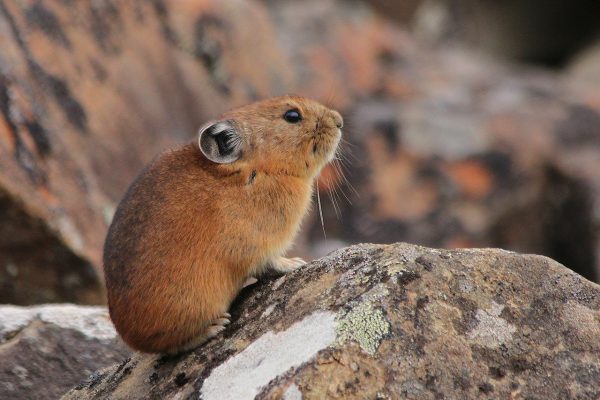
In Russia the pika is called the ‘haystacker’, an apt name since this is precisely what it does in late summer. Each animal makes its own stack of grasses which it dries in the sun. Later, it moves the hay into a ‘larder’ beneath a rock. This store keeps it going throughout the winter when it spends most of its time scurrying along tunnels in the snow, occasionally coming to the surface to sunbathe in the winter sunshine. The fur coat thickens up for winter and it even has hair on the soles of its feet. These ‘fur boots’ help keep the feet warm.
The hoary marmot is quite a different inhabitant of the high mountains. This large rodent, which can weigh 7 kg, prefers succulent plants which are, of course, unavailable in the winter and which cannot be stored like the pika’s hay. So the marmot goes into a deep hibernation for up to eight months of the year.
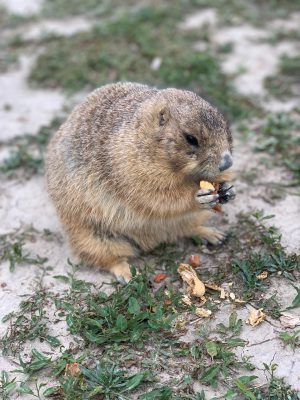
During this time the body temperature drops dramatically to just a few degrees above freezing and the breathing and heartbeat become barely perceptible. Deep within its grass-lined nest beneath the ground the marmot chooses to shun the rigours of winter.
While the pika and the marmot scamper at the base of the scree slopes, the mountain goat looks down from the crags of the dizzy heights above, briefly descending to graze in the meadows. This is a truly remarkable animal but one rarely seen. It moves slowly and deliberately to reach the most inaccessible rock ledges for safety. It generally shuns fights with its enemies, Man and the grizzly bear, but if cornered the stiletto-sharp horns can inflict a fatal wound.
But the mountain goat also has its comic moments, because while it is quite willing to climb upwards, it prefers to slide down scree slopes on its bottom. In fact, the hide becomes notably thicker on the rump.
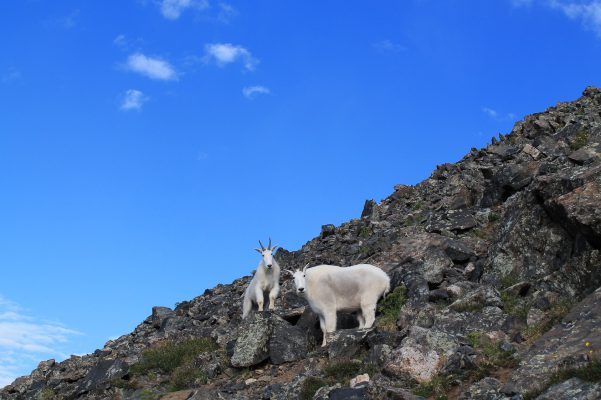
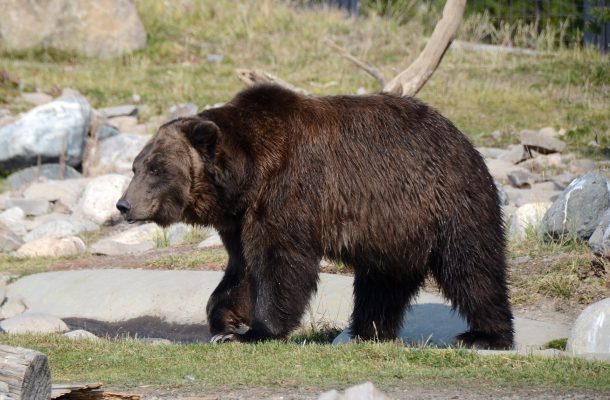
Winter is passed largely sheltering in caves and beneath overhangs while it searches for those few clumps of grass peeking through the snow cover. Curiously, the mountain goat cannot withstand a soaking. The white winter coat is very thick but if it should get thoroughly wet the animal is in grave danger of catching pneumonia.
Regrettably this odd, almost prehistoric-looking animal is in danger of becoming all too rare. Only about 1200 exist in the United States and there are only a few thousand left in Canada. It would be sad indeed to lose this most adept cliff walker.
Another rocky mountain dweller that is dwindling in numbers is the grizzly bear. These animals wander over the mountains searching for bulbs and berries in the spring and summer, and in the autumn they hunt for pikas, marmots and other small animals. Grizzlies have even been known to chase mice. This must present a ridiculous sight, a 450 kg bear trying to catch its tiny, scampering 100g prey.
Grizzlies spend the winters high up on the rocky slopes in caves and it is here, in midwinter, that the blind, helpless babies are born, Mother and cubs drowse through the long cold months in a sort of semi-hibernation and emerge in the spring to begin their search for food. The cubs spend their second winter with mother before setting off on their own.
The Rockies are undeniably beautiful and they provide a fast refuge for some of the rarest and most persecuted animals of the North American continent. However, their increased use for recreations such as skiing and camping have threatened this refuge and some of these magnificent animals may become extinct if wild natural areas are not set aside for their use. The importance of the national parks that have been established cannot be over emphasized.
WINTER is all too long in the Rocky Mountains. On the high peaks, snowfalls are heavy and the winds fierce. Added to this is the ever-present threat that the relentless action of the frost will send tons of rock tumbling downwards in an avalanche.
The animals that live in this harsh environment have to be highly adapted to withstand the rigours of the climate. They also need to be able to protect themselves from other animals that prey on them.
Rocky Mountain sheep, for instance, face danger from avalanches and from the cougar, wolverine and eagle. When not in immediate danger, they graze on the warmer, south-facing slopes where they feed on grasses and other ‘alpine’ plants nourished by snow melting in the sun. But when threatened, they retreat to virtually inaccessible cliff ledges. There they are usually safe, but, as a last resort, they can defend themselves with their horns.

Both sexes have horns, although the male’s are larger. The males use them against each other during breeding rites, when they argue over which male should mate with the females.
One of the sheep’s fiercest enemies is the wolverine, the largest member of the weasel family. A full-grown male measures about a metre and its feet are equipped with formidable claws. Many stories are told about its legendary strength, endurance and cunning. It is not only a hunter but also a scavenger, and will claim a meal whenever and wherever it can. It will readily rob bait from a hunter’s trap, break into a cabin and rifle cupboards, or hunt grouse, chipmunks and mice.
Normally a wolverine would not be large enough to tackle a 100 kg mountain sheep, but it is perfectly capable of killing and eating such an animal trapped in a snowdrift.
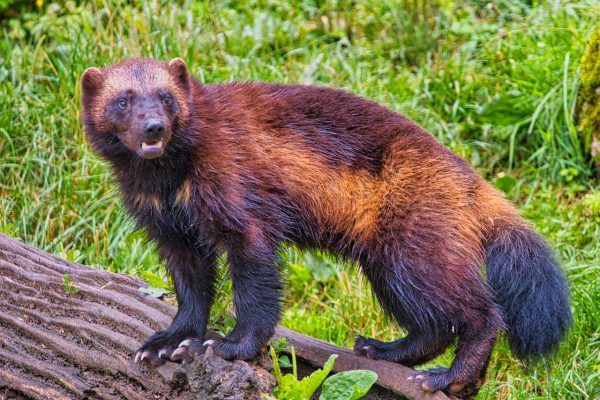
The prowess of a wolverine on snow adds greatly to its fame. Wolverine tracks have been found where the animals have obviously moved with ease over deep snow where other animals, such as wolves, would find it difficult to tread. The wolverine has hairy soles on its feet that insulate them and prevent frostbite.
A solitary animal, the wolverine hunts by night. On its prowls it can travel great distances using its Keen sense Of smell to detect food or danger. It seems to have an uncanny knack of avoiding traps.
Bird life
Some Rocky Mountain birds escape the hardships of the mountain winter by spending only the summers there, but others, like the blue grouse, live all their lives in the mountains. In fact, in summer the blue grouse nests on the lower slopes where food is plentiful, retreating to the higher peaks, where it is safer, only in the winter. However, even there it may still fall prey to predators such as cougars, wolves and, of course, Man.
Golden eagles are not troubled by predators. These huge, beautiful birds, soar among the higher peaks, taking advantage of every swirling up-current of air. Each pair mates for life, and they make several nests of sticks and greenery on ledges, perhaps using one for several years before moving on to another.
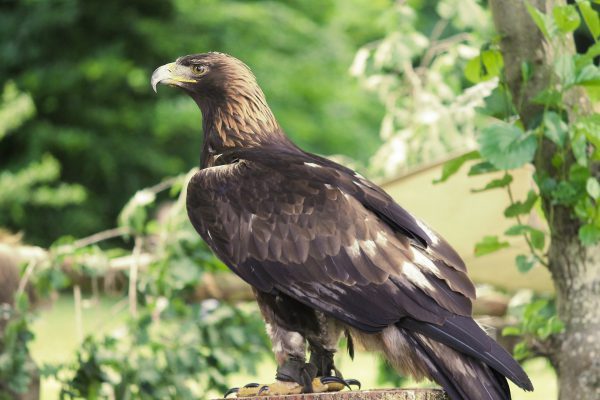
If they do use the same nest again, it is rebuilt a little higher on the foundations of the last year’s. With time, it may become so high that it nearly touches overhanging rock and the birds have difficulty in entering it. They then build another nearby, letting the old nest fall to pieces. Before it is completely destroyed, however, they may move back. By re-using old nests in this way, they need to find less new building materials — an important fact since the materials may have to be gathered from a long distance away.
The breeding season lasts six months, and two eggs are laid. But usually only one youngster is raised, normally the first to hatch. This first hatchling appears several days before its brother and is consequently stronger and more competitive right from the start. The other chick, losing the battle for food, usually perishes. Both parents hunt for food, but the mother always prepares the meal, tearing up the food for the chick.
Golden eagles hunt at dawn. They launch themselves on their two-metre wings, circling and scanning the ground for quarry. Once prey is find a large carcass. On such occasions, they may share the carrion with another large bird, the raven, the largest member of the crow family. Like eagles, ravens nest on cliffs, but they do not kill large prey, preferring seeds, insect grubs as well as carrion.
The raven is the acrobat of the Rockies. In the spring, pairs tumble and roll together in the air and some have even been seen to fly upside down — no mean feat for a bird. Nobody knows the reason for these antics; it may just be joy that the long Rocky Mountain winter is over.

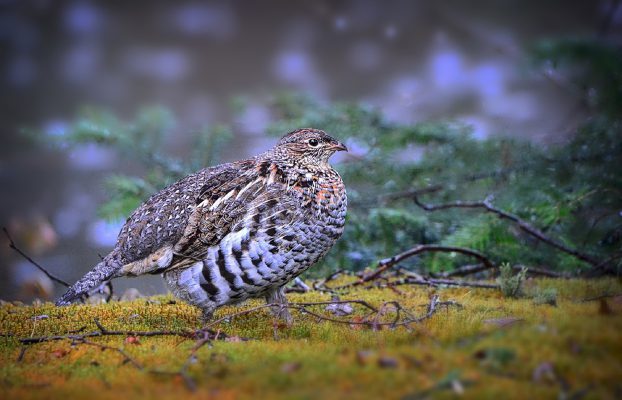
A look at a map of North America suggests that the enormous expanse of the Rocky Mountains would be adequate sanctuary for its birds and mammals. But they have not escaped interference from Man. Eagles were once persecuted for killing livestock, but even though they are now recognised as posing no threat — at least by scientists if not by ranchers — the destruction of their hunting territories by logging forests or damming rivers for hydroelectric schemes is much more serious in the long run. Hopefully, at least the American and Canadian National Parks will provide somewhere where these animals can live in relative peace, pursued only by the occasional over-eager Camper or tourist.
Now let us know which animals and birds do you think can survive even more coming years or centuries on the barren peaks of the rockies. Describe it, in comment section below.
Animals that survive on the barren peaks of the Rockies have adapted to harsh environmental conditions, including extreme cold, high altitude, and scarcity of resources. Here are some ways they manage to survive:
-
Adaptation to cold
Many animals in the Rockies have evolved physical adaptations to withstand the cold. These include thick fur or feathers, layers of insulating fat, and smaller extremities to reduce heat loss. Some animals, like the mountain goat and bighorn sheep, have specialized hooves that provide better traction on steep, icy slopes.
-
Energy conservation
Due to the limited food availability, animals in the Rockies have developed strategies to conserve energy. They lower their metabolic rates during periods of food scarcity and minimize unnecessary movement. Some hibernate during winter to conserve energy, like bears that go into a deep sleep and rely on stored fat for months.
-
Specialized diets
Animals in the Rockies have adapted to eat specific vegetation that is able to grow in high altitude and colder temperatures. They have adapted digestive systems to efficiently break down low-quality plant material. For example, pikas survive on a diet of grasses and alpine plants.
-
Migration
Certain animal species, such as birds, undertake long-distance migration to find suitable breeding and foraging grounds. They move to lower elevations during the winter to escape harsh conditions and find more abundant food resources.
-
Natural camouflage
Many animals in the Rockies have developed coloration and patterns that blend with the barren rock and snow-covered terrain. This enables them to hide from predators and reduces the chances of being detected by prey or competitors.
-
Social structures
Some animals form social groups or packs to increase chances of survival. Wolves, for instance, hunt in coordinated groups and share resources. This cooperative hunting behavior enables them to successfully capture larger prey that can sustain them for longer periods.
-
Water management
High altitudes in the Rockies often mean limited water sources due to frozen or inaccessible water bodies. Animals have adapted to conserve water through physiological mechanisms. They have efficient kidneys that concentrate urine and reduce water loss from their bodies.
Animals that survive on the barren peaks of the Rockies have evolved a combination of physical, behavioral, and physiological adaptations to withstand the challenging environmental conditions and optimize their chances of survival.
Animals in the Rockies have adapted to the high altitudes and harsh conditions to find enough food and water to sustain themselves. Here are some ways they manage to do so:
-
Grazing and Foraging
Many herbivores in the Rockies, like elk, deer, and bighorn sheep, feed on grasses, shrubs, and other vegetation available in meadows, valleys, and slopes. They are adapted to efficiently extract nutrients from these plant sources.
-
Migration
Some animals, such as elk and mule deer, undertake seasonal migrations to lower elevations during the winter when food becomes scarce at higher altitudes. This allows them to find more abundant food sources in lower valleys.
-
Hibernation
Some smaller mammals, like marmots and chipmunks, hibernate during the harsh winter months when food availability is low. They store food in their burrows during the summer and rely on fat reserves to sustain themselves during hibernation.
-
Adapted Diets
Many animals in the Rockies have specialized diets to meet their nutritional needs. For example, mountain goats and bighorn sheep have evolved to consume tough alpine vegetation and are able to extract nutrients from relatively poor-quality forage.
-
Efficient Water Utilization
Animals in the Rockies have adaptations that allow them to conserve water. For instance, many species have highly efficient kidneys that minimize water loss, and some can obtain water from the vegetation they consume.
-
Dependence on Snowmelt
In the Rockies, snow is a crucial water source. Many animals rely on snowmelt for hydration during the spring and summer months when other water sources might be limited. They may also dig through snow to access vegetation underneath.
-
Exploiting Water Sources
Animals in the Rockies are adapted to seek out and exploit available water sources like lakes, rivers, streams, and ponds. They have well-developed senses to detect water from a distance and navigate to these sources.
The animals in the Rockies have evolved a range of strategies to find and utilize food and water resources, allowing them to survive and thrive in the high altitudes of this rugged environment.
Animals in the Rockies, like any other habitat, have adapted various strategies to navigate the treacherous terrain of barren peaks and find water sources and shelter. Some of these strategies include:
- Migration: Many animals in the Rockies, especially larger herbivores like elk and bighorn sheep, practice seasonal migration. They move from higher barren peaks to lower elevations where water and vegetation are more abundant during different times of the year. This allows them to avoid the harsh conditions of the higher peaks and find suitable water sources and shelter.
- Scent and memory: Animals in the Rockies rely on their acute sense of smell and memory to find water sources. They often memorize the location of various water bodies and navigate using scent cues. This helps them to avoid wasting time and energy by directly moving towards known water sources.
- Foraging behavior: Many animals have adapted their feeding behavior to obtain water indirectly from the vegetation they consume. They have specialized physiological mechanisms that allow them to extract and conserve water from their food. This helps them to survive in areas where direct water sources are scarce.
- Knowledge of seasonal water sources: Over time, animals in the Rockies have learned about the locations of temporary water sources that appear during certain seasons. They may rely on melting snow or rainfall that pools in specific areas, and their knowledge of these sources helps them access water even in barren peaks for a limited time.
- Seeking refuge in rock formations: Rock formations and crevices provide natural shelters for animals in mountainous regions. Animals can take advantage of these features to find protection from extreme weather conditions and predators. They may seek refuge in caves, under rock overhangs, or in dense vegetation at lower elevations.
- Utilizing snow and ice melt: Some animals, like ptarmigans and ptarmigan mice, have adapted to living in the alpine regions and rely on snow and ice as a water source. They can use their bodies to melt snow or extract moisture from ice to obtain the water they need.
The animals in the Rockies have evolved various behavioral and physiological adaptations to navigate the treacherous terrain and find water sources and shelter in an environment that can be challenging to survive in.
Hibernation and Migration
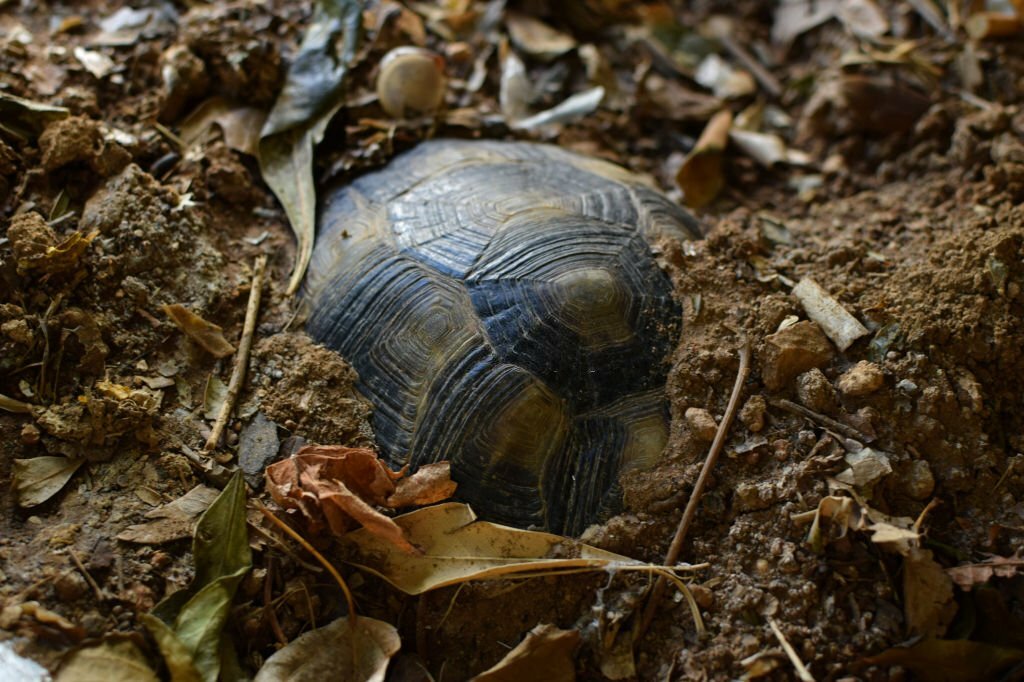

Hibernation and migration both play important roles in the survival of animals on the barren peaks of the Rockies. These strategies allow animals to cope with the harsh winter conditions and scarcity of food resources.
Hibernation is a state of prolonged torpor or sleep-like state that animals enter to conserve energy during winter when food is scarce. Many small mammals such as ground squirrels, chipmunks, and marmots in the Rockies hibernate for several months. By lowering their metabolic rates, body temperature, and heart rates, hibernating animals can survive on stored fat reserves without actively searching for food. Hibernating animals find shelter in burrows or dens to protect themselves from the extreme cold and freezing temperatures on the peaks.
Migration is another strategy utilized by some animals in the Rockies to survive the challenging conditions. Many bird species, such as the golden eagle and various songbirds, migrate to lower elevation or warmer regions during winter. The Rockies serve as a crucial breeding ground for these birds during the summer, where they find abundant food and suitable nesting sites. However, the scarcity of food resources and the difficulty of finding shelter during winters prompt them to migrate to more favorable areas.
Both hibernation and migration allow animals on the barren peaks of the Rockies to adapt to the limited resources and extreme weather conditions. By entering a dormant state or seeking more favorable habitats, these animals increase their chances of survival until the arrival of spring when food resources become more abundant.
Animals that inhabit the barren peaks of the Rockies employ various strategies to withstand extreme temperatures and strong winds. Some of these strategies include:
Many animals in the Rockies, such as bears, marmots, and ground squirrels, hibernate during the cold winter months. Hibernation allows them to conserve energy and lower their metabolic rate to survive the extreme cold.
Many animals have evolved dense fur, feathers, or thick fat layers that act as insulation against the harsh cold and strong winds. This helps them retain body heat and prevent excessive heat loss.
Some animals, like mountain goats, have developed physical adaptations to survive in the Rockies. They have specialized hooves that provide them with excellent grip on steep cliffs and rugged terrains, allowing them to navigate and find shelter.
Animals often seek refuge in natural shelters like caves, rock crevices, or burrows to protect themselves from extreme weather conditions. These shelters provide them with a thermal refuge and minimize exposure to strong winds.
Behavioral adaptations
Animals may modify their behavior to withstand extreme temperatures. For example, they may seek areas with southern exposure to maximize sun exposure and warmth during the day, or they may huddle together in groups to share body heat and reduce heat loss.
Some animal species, such as birds, migrate to the barren peaks of the Rockies during the warmer months and then migrate to lower elevations or completely different regions during the harsh winters. This allows them to escape the extreme cold and strong winds.
Some animals have lower metabolic rates, which reduces their energy requirements and allows them to conserve energy in harsh conditions. This can be seen in animals like pikas that have a low body temperature and reduced activity levels.
It’s important to note that different animals have different adaptations and strategies to survive in extreme environments, and these strategies can vary depending on the specific species and their physiological capabilities.
Frequently Asked Questions : Animals survival on the barren peaks of the Rockies
Animals on the barren peaks of the Rockies have evolved unique adaptations and survival strategies to endure the harsh conditions of their environment.
Some examples of animals that can be found on the barren peaks of the Rockies include bighorn sheep, mountain goats, marmots, pikas, ptarmigans, and golden eagles.
Animals face numerous challenges in the barren peaks of the Rockies, including extreme temperatures, strong winds, scarcity of food and water, thin air with low oxygen levels, and steep, rocky terrains.
Animals have adapted various feeding techniques to obtain food in the barren peaks of the Rockies. Bighorn sheep and mountain goats are adept climbers and use their strong hooves and specialized digestive systems to feed on grasses, lichens, and shrubs found on the steep slopes. Marmots and pikas store food in burrows during the summer season to survive the food-scarce winter months, while ptarmigans feed on vegetation available at higher altitudes.
Water sources are limited in the barren peaks of the Rockies, and animals have developed several strategies to find water. Some animals, like bighorn sheep and mountain goats, can get all the moisture they need from the vegetation they consume. Others, such as smaller mammals like marmots and pikas, rely on snowpack or melting ice patches for their water needs.
To cope with extreme temperatures, animals on the barren peaks of the Rockies have developed various physiological and behavioral adaptations. For instance, bighorn sheep and mountain goats have thick, insulating fur that helps protect them from the cold. They also have oil glands in their skin that provide an additional layer of insulation. Additionally, animals may seek shelter in crevices or caves during extreme weather conditions.
High altitudes mean thin air with lower oxygen levels, posing a challenge to animals. However, animals like bighorn sheep and mountain goats have adapted by having larger lungs and more red blood cells to efficiently transport oxygen. This enables them to thrive in the high-altitude environments.
Predator protection may vary among different species. Bighorn sheep and mountain goats have the advantage of being agile climbers and can retreat to inaccessible cliff ledges to escape predators such as wolves and mountain lions. Smaller animals like pikas and marmots rely on their burrows as a safe refuge from predators. Birds of prey, such as golden eagles, use their sharp vision and powerful flight to hunt on the peaks.
Yes, there are certain species found exclusively on the barren peaks of the Rockies. The white-tailed ptarmigan, for example, is a bird that has the remarkable ability to change the color of its feathers seasonally, allowing it to blend into its snowy surroundings during winter and transition to brown in the summer. The ptarmigan is well-adapted to the harsh environment, with feather-covered feet that shield it from the cold and help walk on the snow.
These animals play vital roles in the ecology of the barren peaks of the Rockies. They help maintain the balance of various populations and contribute to the overall biodiversity of the region. For instance, the bighorn sheep and mountain goats help control vegetation growth through browsing, preventing overgrazing and maintaining habitats for other fauna. Additionally, they serve as prey for predators, contributing to the food web of the ecosystem.


